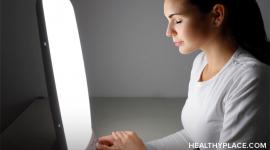How to Beat the Winter Blues

The "winter blues" are a sluggish and low mood that appears over the winter months. While sometimes seasonal affective disorder (SAD) is referred to as the winter blues, SAD is a formal major depression diagnosis and the winter blues is not. The symptoms of the winter blues do not rise to the level of a mental illness, but can still be unpleasant and somewhat impairing for people. In some northern climates, full-blown SAD is experienced by 10% of people while another 30% experience the winter blues.1
Symptoms of the Winter Blues
The symptoms of the winter blues are similar to depression but are milder. Symptoms of the winter blues include a low or sad mood as well as:
- Irritability
- Decreased energy, fatigue
- Change in appetite
- Lack of motivation
If low mood symptoms continue for more than two weeks, and are significantly impairing day-to-day functioning, a doctor should be seen for a full depression screening (take our free online depression test).
Beating the Winter Blues – Diet and Exercise
Beating the winter blues involves mostly lifestyle changes in diet, exercise and sleep patterns but light therapy and psychotherapy may also be helpful.
Diet and exercise are tied into how our whole body works. A diet with too many sugars (simple carbohydrates), saturated fats or alcohol will bring down mood. Having a sugary treat may feel good at the moment, but will leave you feeling tired soon after. A healthy diet will keep energy levels up and prevent any winter weight gain. Getting a full eight hours of sleep every night also helps energy during the day.
Exercise has been shown to be a powerful antidepressant in those with depression and can help those with the winter blues too. Not only can exercise improve your mood and combat stress but, combined with a healthy diet, can boost energy throughout the day. Exercise with a friend is particularly useful as it combines the benefits of exercise with the benefits of socializing with others.
Beating the Winter Blues – Therapy and Light
It's known that those with seasonal affective disorder do significantly better when treated with cognitive behavioral therapy (CBT) and light therapy together. This therapy may be useful for the winter blues as well. CBT focuses on understanding one's own thought processes and learning to use tools to alter those thoughts.
Light therapy is frequently used in the treatment of seasonal affective disorder as the reduction of light available in the winter appears to evoke depressive symptoms in some people. Additional light for the winter blues can also be helpful. This does not mean turning on every light in the house, however. This means getting more natural sunlight and the addition of more natural light in the home can also help. Ways to get light for the winter blues include:
- Spending more time outdoors; for example, frequent trips to the ski slopes or going for walks everyday.
- Switch indoor lights to full-spectrum or 4100 Kelvin bulbs.
- Use a seasonal affective disorder light box.
APA Reference
Tracy, N.
(2022, January 3). How to Beat the Winter Blues, HealthyPlace. Retrieved
on 2025, November 22 from https://www.healthyplace.com/depression/seasonal-affective-disorder/how-to-beat-the-winter-blues


